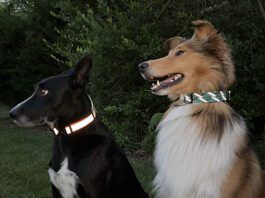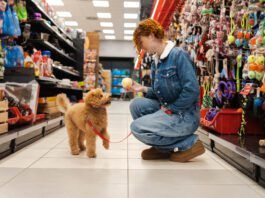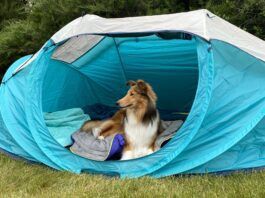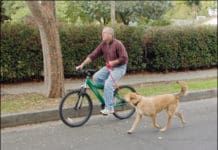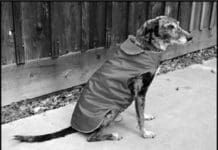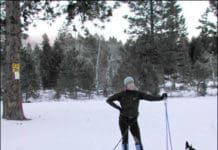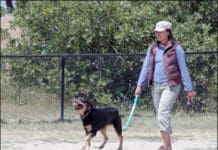Training Your Newly Adopted Dog
I have had a number of dogs over the years, but Otto is actually the very first dog that I’ve gotten as a co-owner. A former boyfriend paid the $40 or $50 that a Bodega, California, sheep rancher wanted for my heart/soul dog, Rupert, way back in 1989, but the puppy was a birthday present for me; Rupe was always my dog. He stuck close by my side through the breakup of that relationship and the next few, too. When Brian (the man who later became my husband) came on the scene, he and Rupert formed a bond, but still, Rupe was mine. Later, a summer of dog-sitting my sister Sue’s long-haired Chihuahua, Mokie, turned into a several-year stay. Mokie has since gone on to live with my sister Pam, who won’t ever give him up; Brian was more than happy when I did so. He tolerated Mokie, but never fully embraced the idea of a yappy little house-dog, no matter how smart and cute. So, while Brian and I have shared a home since 1996, we have never truly shared full ownership of a dog, like we do now. I selected Otto from a shelter, but Brian was the one who gave the signal that it was time for us to get a dog. When Brian and I got married, I kept my own last name, but Brian wanted to be sure that Otto took his surname, and even made sure the dog’s full name (“Otto Maddock”) was engraved on his ID tag. And Brian has been a real champ about sharing dog-care duties with me.
Building a Healthy Relationship With Your Dog
Like most positive dog trainers, I constantly remind my students that, whether they are conscious of it or not, they are training their dogs every moment they spend together. Whatever you choose to reinforce -- even when you’re not in a formal training session -- will affect your dog’s future behavior. The things that your dog does that you frequently reinforce are likely to increase, so it makes sense to reinforce him as frequently as you can for the behaviors that you enjoy. Here’s an interesting and powerful side-effect of frequent positive reinforcement: This practice can not only influence your dog’s behavior in a way that you like, but also improve your relationship in a sort of positive feedback loop. When a dog (or anyone!) is rewarded, it makes him feel good – about himself and the person giving the reward. And when your dog feels good about you, it tends to make him want to be with you more, and it motivates him try to earn even more reinforcements. Said simply, frequent positive reinforcements strengthen the relationship between you and your dog.
Acquiring a New Dog or Puppy
So, we have a new dog! I’m soooo happy! And while it’s been really time-consuming to properly integrate a new dog into our household, it’s also been incredibly rewarding, interesting . . . and inspiring! Inspiring to have a fresh opportunity to experience many of the things we talk about in WDJ – with a sense of urgency and immediacy I haven’t had for quite some time! Just in our first few days I was thinking hard about things like potty training, how to deal with dogs who are not food-motivated, finding a good vet, vaccination, parasite control (fleas, ticks, heartworm), introducing dogs to cats, barking, leash manners, the best food, itchy skin, digging (as you’ll see on page 18), no-slip collars, dogs who are uncomfortable indoors, quiet clickers, and much more.
Adopting a New Dog
You've adopted a new adult dog into your family. Congratulations! As you search for information to help you help your new furry family member adjust to this difficult transition in his life (change is hard!), you may discover that there are lots of resources for new puppy owners, but for new adult-dog owners, not so much. Where do you begin? We've compiled a list of suggestions to help make life with your new dog easier for all concerned. His first few weeks with you set the tone for your lifelong relationship. If you follow these time-tested protocols, you're more likely to experience smooth sailing - or at least smoother sailing - with your recycled Rover, who may arrive at your door with some baggage from his prior life experiences. We hope you've made wise plans and decisions before your new canine pal sets paws through your door for the first time. But even if he's already camped out on your sofa, it's not too late to play catch-up with many of the suggestions that follow.
Nighttime Dog Walking Visibility Products
Walking with a dog in the dark can present a number of challenges for many dog owners. You may not be able to see well in the dark; this can make you take a hard step off a curb or trip on a rise in the sidewalk. Finding your dog's poop at night (so you can pick it up and dispose of it properly) is also a problem. Although definitely in the minority, some people walk their dogs off-leash at night. I've met a number of people at night who were walking off-leash dogs on the wide trail that tops the river levee that parallels my town's main street. If I wasn't a dog person, I would probably be unnerved by the fast approach of a strange dog in the dark. And as it is, if the dogs were mine, I'd be worried that one of them would wander off or get lost if I couldn't keep sight of them.
Keeping Your Dog Warm and Dry This Winter Season
Well, I’ll start off by admitting that there is no single perfect dog coat. Or, I should say, if there is a perfect coat, I haven’t seen it. Fortunately, there are plenty of very good coats that can suit most of any dog owner’s selection criteria. We actually started our quest by looking for two different coat types: a super-warm coat, and a garment that would keep a dog dry in the hardest rainfall. We tried (but didn't think it would be possible) to find a coat that provided extraordinary insulation and the ability to keep a dog dry (and we were right; we did not find such a coat). Although we like all the coats that we feature in the following pages, we appreciate them for different reasons. Your dog and his special needs will have to inform your choice, based on the features of each coat. Each is ideally suited for a different climate, purpose, and type of dog.
Winter Activities You Can Enjoy With Your Dog
courtesy of skijornow.com.üThe author and her dogs
How to Maintain Your Dog’s Health
Every aspect of a dog’s life affects every other aspect, which can make it difficult to decide where you should start with a dog with problems. No single effort you make, no matter how huge, will miraculously turn everything around. The good news, though, is that a multi-pronged, holistic approach, comprised of incremental, intelligent improvements in his life, just may save the dog.
The Rewards of Adopting an Older Dog
The nine-year-old Golden Retriever was a mess. Her nails were so long, they curved around and made walking difficult, her coat was filthy, and her ears were so badly infected that her veterinarian recommended surgery. Now she was being given up for adoption. Would anyone want her? The odds were against it, but herefs a holistic makeover story in which an old dog gets a new name, a new look, a new home, and an exciting new life. It also serves as a model for an ideal adoption and rehabilitation of an older dog.
Dog Gear of the Year
There are millions of pet products being marketed to dog owners for direct use on, in, or around their dogs and puppies: foods, treats, supplements, toys, training tools, garments, medical supplies, grooming tools and unguents, beds, fences, and crates.
Successfully Adding a Second Dog to Your Home
If your dog is reactive to other dogs but you are thinking about getting another dog anyway, read the following for both a sober warning as well as cautious encouragement. It’s a wonderful case of a seriously dog-reactive dog improving enough to be able to live with another dog – but it took tons of the kinds of work described by Pat Miller in the previous article to get there, and the dog’s training and mangement is ongoing.
Letters: 02/06
but I felt it necessary to respond to these articles.
Denise Bruhn
via e-mail
I don't usually feel defensive when I read critical letters




